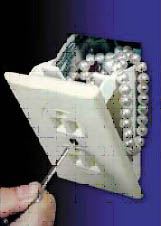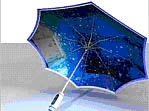 When my cousin introduced me to the Mangosteen several years ago, he described it as the best fruit on Earth. We were in Harrod’s (yes, in London) and found it in their wonderful fresh produce department. We bought a few of the admittedly-odd-looking fruit, and he began to peel it prior to exiting the store. He pried out a pale, whitish fleshy wedge, and handed it to me.
When my cousin introduced me to the Mangosteen several years ago, he described it as the best fruit on Earth. We were in Harrod’s (yes, in London) and found it in their wonderful fresh produce department. We bought a few of the admittedly-odd-looking fruit, and he began to peel it prior to exiting the store. He pried out a pale, whitish fleshy wedge, and handed it to me.
In a single word: absolute delight.
Upon returning to San Francisco, I sought out this heavenly treasure, but alas, have never found it (other than in preserved format, which doesn’t hold nearly the same appeal). On subsequent trips to the Netherlands, London, and Vietnam, I’ve managed to find and consume the delicious fruit on each trip.
I recently visited http://www.mangosteen.com/ to try to find out why I can’t get the darn things in the US. Turns out that due to some types of Asian insects combined with a lack of irradiation ability, the mangosteen is not available. Although a recent update to the site implies that the US department of agriculture is working to get the fruit importable (is that a word?) sometime this year! Joy!
 Personally, I describe the taste as “somewhere between a kiwi, mango, and raspberry” but I don’t think that’s quite right. Wikipedia says “underripe strawberry, with hints of sweet orange” which is also off in my opinion. All I can say is when given the chance, seek it out. It’s worth it.
Personally, I describe the taste as “somewhere between a kiwi, mango, and raspberry” but I don’t think that’s quite right. Wikipedia says “underripe strawberry, with hints of sweet orange” which is also off in my opinion. All I can say is when given the chance, seek it out. It’s worth it.
More photos of the mangosteen in action.
ps – no, it is not a Jewish mango.


 It’s mid-May, and I’ve flown roughly 75,000 miles this year, on track to hit 100K by late June. This is a lot by my standards, more than I’ve flown in any other given year (other than once). Virtually every trip I seek out a few little tricks to make my travel a little easier. I found my favorite neckrest at SFO in the “oh crap I forgot to buy someone a gift so I’ll pick up a cool San Francisco t-shirt” store (located near the useful
It’s mid-May, and I’ve flown roughly 75,000 miles this year, on track to hit 100K by late June. This is a lot by my standards, more than I’ve flown in any other given year (other than once). Virtually every trip I seek out a few little tricks to make my travel a little easier. I found my favorite neckrest at SFO in the “oh crap I forgot to buy someone a gift so I’ll pick up a cool San Francisco t-shirt” store (located near the useful  SeatGuru has seat maps for most of the airplanes (and each of their various configurations), chock full of advice on a seat-by-seat basis. A sample “map” is on the right. In a nutshell, green means good, yellow means beware, and red means don’t sit under any circumstances. Their seat maps also include lavatories, galleys, AC power ports, and even the windows. The best part is the seat-by-seat guide, which has some very practical information. Here’s an example:
SeatGuru has seat maps for most of the airplanes (and each of their various configurations), chock full of advice on a seat-by-seat basis. A sample “map” is on the right. In a nutshell, green means good, yellow means beware, and red means don’t sit under any circumstances. Their seat maps also include lavatories, galleys, AC power ports, and even the windows. The best part is the seat-by-seat guide, which has some very practical information. Here’s an example:



 There’s a whole lotta convergence goin on these days. A big push (one I used to spearhead while working for
There’s a whole lotta convergence goin on these days. A big push (one I used to spearhead while working for  What do people like the most? They like choices!
What do people like the most? They like choices! To fulfill his idea the designer used electronic paper. He also installed a computer chip into the umbrella stem. In fact, we are not much interested into its detailed working mechanism. The thing we understood is that it’s connected with electricity and often gets wet. We hope that it’s absolutely safe and nobody will be harmed when using it in rainy day. Walking with this item you’ll for sure attract everybody’s attention.
To fulfill his idea the designer used electronic paper. He also installed a computer chip into the umbrella stem. In fact, we are not much interested into its detailed working mechanism. The thing we understood is that it’s connected with electricity and often gets wet. We hope that it’s absolutely safe and nobody will be harmed when using it in rainy day. Walking with this item you’ll for sure attract everybody’s attention.
 Let’s face it. The transition to HDTV has been a painful and confusing one. It’s bad enough that there are now 10 different types of TV technologies available in the market, but what’s worse is that display makers, content providers, set-top box manufacturers, and the entire PC industry has been pushing several completely different ways of connecting high definition components since the launch of the first HDTV products in 1998. What’s the end result? There are now millions of high definition products in the market, and they all have different plugs on the back. Component video, FireWire, DVI, and HDMI have all graced the back of a TV set at some point over the last eight years, and now consumers are thoroughly confused.
Let’s face it. The transition to HDTV has been a painful and confusing one. It’s bad enough that there are now 10 different types of TV technologies available in the market, but what’s worse is that display makers, content providers, set-top box manufacturers, and the entire PC industry has been pushing several completely different ways of connecting high definition components since the launch of the first HDTV products in 1998. What’s the end result? There are now millions of high definition products in the market, and they all have different plugs on the back. Component video, FireWire, DVI, and HDMI have all graced the back of a TV set at some point over the last eight years, and now consumers are thoroughly confused.